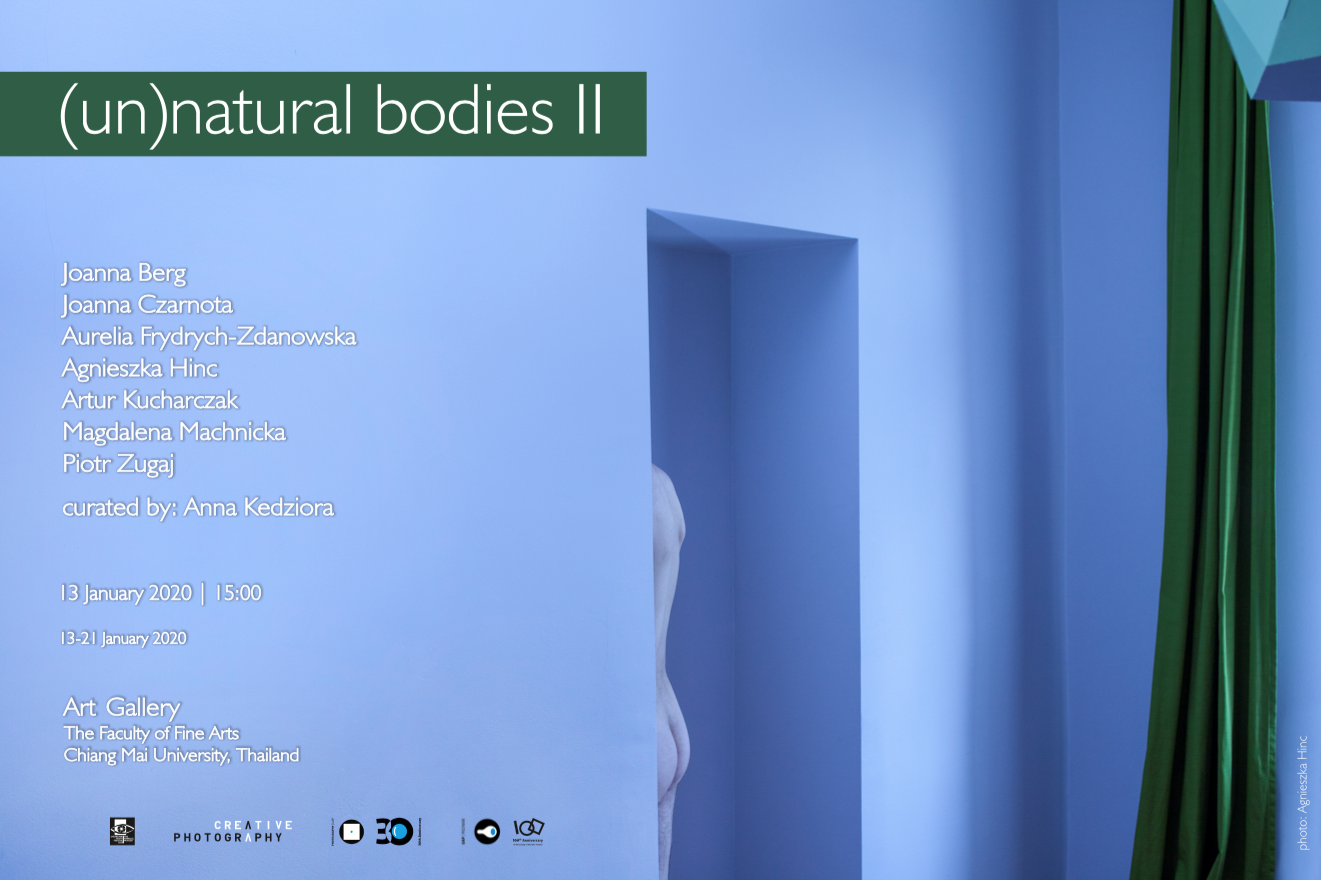(Un)natural bodies II exhibition is built upon three time dimensions (past, presence and future) entwined with a dense network of mutually interacting connections. Different perspectives meet across these dimensions – either individual or collective, intimate and sensual or entangled in dramatic common history (WWII), metaphorically or literally intertwined with nature, melted in digital reality or craving for sensual confirmation.
The line between natural and unnatural has been shifting a lot recently with the definition of natural being vague and open to an extend that escapes simple classifications. More and more often natural may be understood as analogue, non-digital. In that respect our „natural” bodies may soon be so much out of date that we’ll no longer need them nor use them in a traditional way. People might get disconnected from their own fleshy shells replaced by effective interfaces. Or, on the other hand, they might have to share their bodies, the most intimate space, with non-human organisms to survive in the world destructively transformed by a highly anthropocentric attitude.
Authors of this exhibition not only question the definition of „natural”, they also expand the notion of a body itself, eg. analyzing landscape with medical tools, looking for symbolic access to human bodies’ memory deeply melted in the life circle of non-human life, inventing human-plant hybrids as survival solutions for both species. One might wonder if the importance of the human body will endure the storm of the digital revolution or will the future deny its the necessity completely? So far, the physicality of the body remains crucial and can either trap ones identity or help transgress the social boarders. Sometimes they are too weak to provide full multileveled connection with the outer world. Yet they may become unnaturally receptive in other realms exceeding the limits of sensual perception.
Bodies, (un)natural and (non)human to varying extend, provide reference points when analyzing the world today, searching for meaning in the past or predicting the future. Fragile and powerful at the same time.
Anna Kedziora
curator
